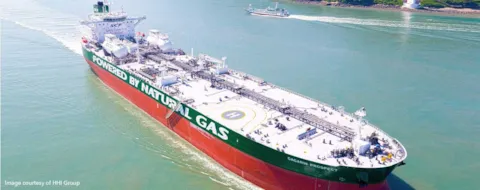Why LNG as fuel
The maritime industry is under pressure to improve its sustainability – especially its emissions to air. In terms of greenhouse gas emissions (GHG), the industry needs to take advantage of improvements today – to minimize the long-term impact on the planet.
LNG bunkering infrastructure is continually improving, with fuel already available in most major shipping hubs.
The uptake of LNG has been very strong in recent years, especially in newbuildings. This has been driven by a combination of the environmental benefits and attractive fuel prices, and the trend is accelerating.
Switching to LNG as a fuel can provide significant advantages, by meeting regulatory requirements, offering enhanced competitiveness, as well as improving overall air quality, and reducing GHG emissions:
- LNG-fuelled vessels can reduce their EEDI rating by 20%, while their Carbon Intensity Indicator will be reduced by approximately the same amount.
- Competitive vessel design ensures upcoming compliance some ten years longer than conventional designs.
- Reduces NOx emissions by up to 80% and almost eliminates SOx, particulate matter (PM)
- GHG emissions can be reduced by up to 23% with modern engine technology.
- Biogas and drop-in fuels offer a path to further reducing vessel carbon intensity.
To capitalize on these benefits, it is important to choose the technology that fits your vessel type and operational parameters.
Since its introduction, DNV has pioneered the use of LNG in shipping. We have the proven track record, data and research, expertise, and experience to support our customers and the industry in moving forward with LNG.
Related webinars
On-demand webinar: LNG as ship fuel – where are we and what comes next? (May, 2021)
Get access to the webinar recording and presentation
Further on-demand webinars for the maritime industry
EEXI, Decarbonization in shipping, and many more
